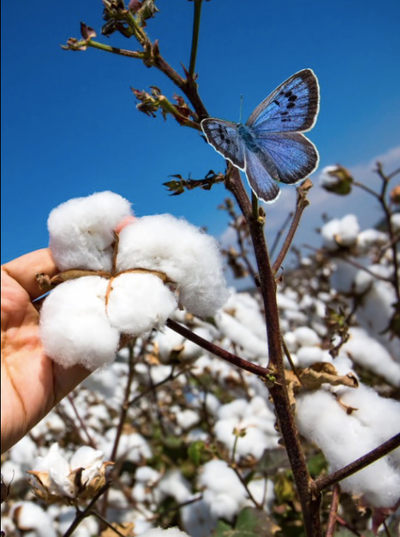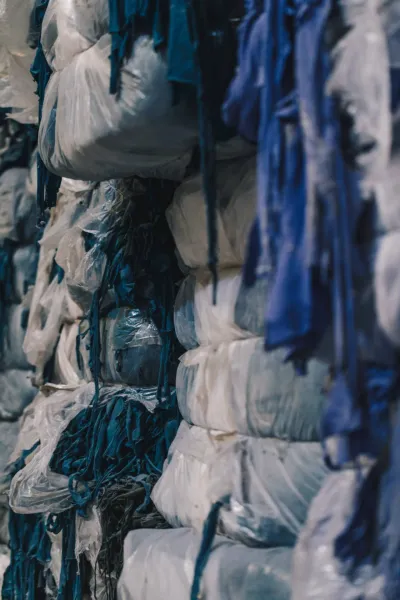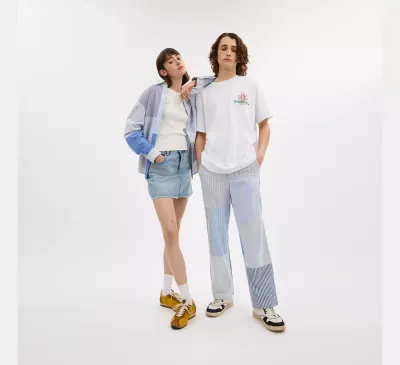"It's about changing your behaviour and attitude towards one's consumption," Nicole Josephson says when asked about what we can do to contribute to a more sustainable fashion industry. Josephson works as a creative project manager at Aqua Dental HK but has devoted her Instagram account to skincare, everyday mum life and sustainable fashion.
She lives in the heart of Stockholm with her husband Ian, their two-and-a-half-year-old son John and their cocker spaniel Janne. Josephson makes a point to mention Janne is five years old and therefore not a product of Covid, "We are genuine dog owners, which is a dedicated lifestyle I am proud of."
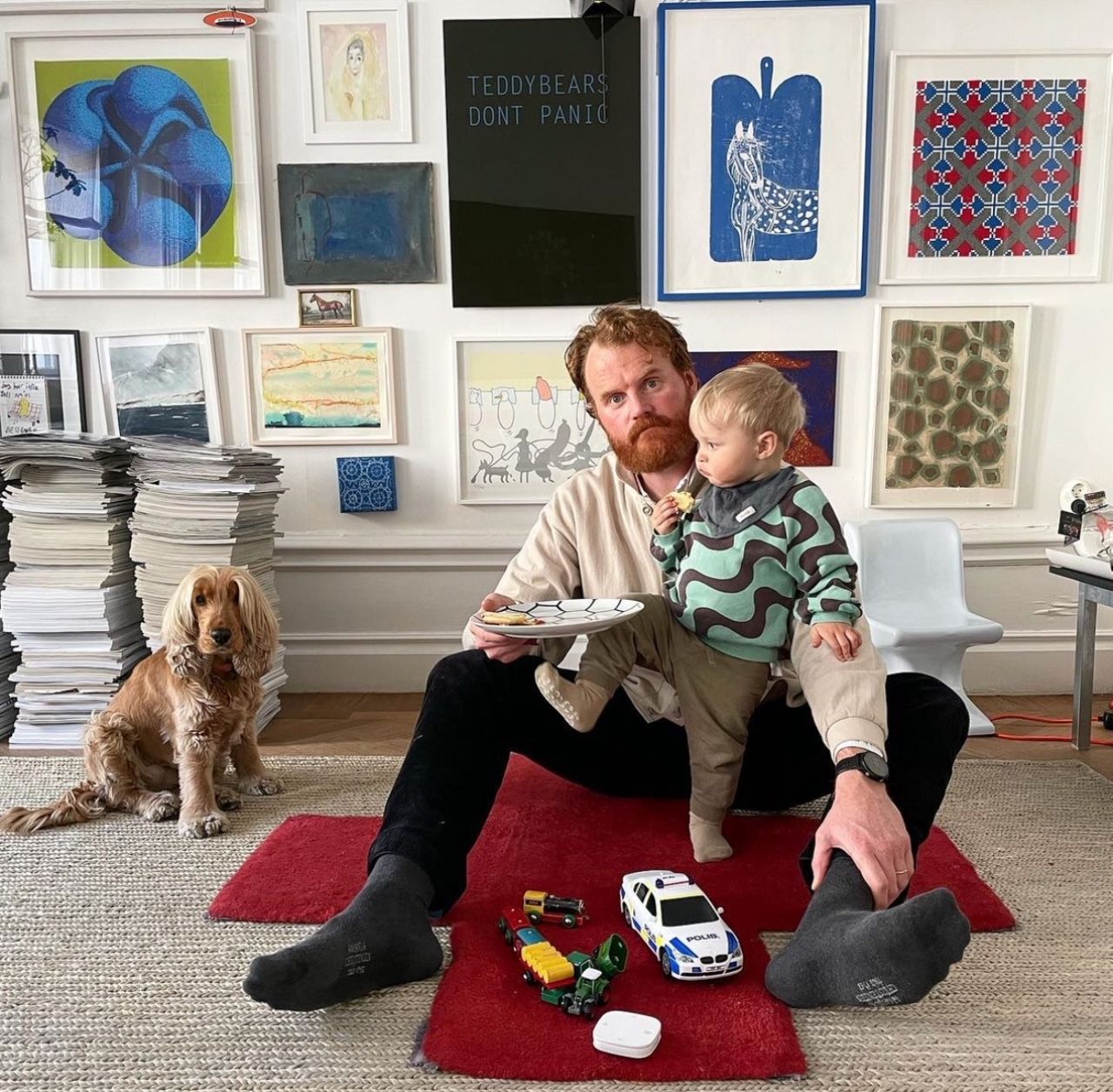
Josephson says being aware of buying patterns and the impact of consumption has always been a part of her identity, "My critical thinking was awakened already in my teens, long before social media." But her path towards sustainable fashion began when she realised the negative consequences of the fashion industry. "I had the luxury of growing up without 'SoMe' and 'outfit of the day' from all the influencers that triggered my need to buy", she says.
"Kids grow up today thinking it's perfectly normal to own 20 pairs of similar cheap sneakers to match a specific outfit. But even adults, much older than me, gallop around on the internet with boastful walk-in closets with clothes and shoes lining the walls." Expressing she finds it strange that many don't reflect on "what kind of signals they send out, what it does to the environment and how much capital they have tied up in crap."
"Sustainable fashion is about making choices that feel good when making a purchase, and promote a long life for each garment," Josephson says. "You don't need to exaggerate and research the subject full time to be able to make better choices, common sense goes a long way." Together with her husband, the family applies the 'one in, one out' principle, which she says forces them to consider every purchase and dispose of something existing.

If you are not familiar with the 'one in, one out' principle, it means that for every new purchase one item has to go, preferably one of the same physical value, to not overcrowd your closet. For example, maybe don't buy a coat, and donate a t-shirt. Josephson notes, "If you take care of your clothes, you can sell, exchange or donate them when you get tired and want to buy something new. I apply this to everything and every purchase."
Sustainable fashion is many things, and depending on who you ask, you will most likely get varying replies. For Josephson, a fair production chain is a category that stands out the most, "A pair of jeans should not cost £15, it's a receipt that someone is working under slave-like conditions to enable mass production of the garment." She goes on to explain that if all of our newly produced purchases are an investment, we are more likely to care for said item. "Then when you are tired of it, it can be given new life by someone else, which promotes a circular and sustainable view of fashion consumption."
"It is important to distinguish between what's 'nice to have' and what's a 'need to have'."
- Nicole Josephson
"Above all, everyone has to understand the problem with a pair of jeans or shoes costing £15, it shouldn't cost £15. Who in the production chain even makes money from it? Least of all the one who sits in the factory and sews around the clock for an unreasonable amount of money," Josephson says. This type of fashion consumption that so many have become accustomed to, shows that clothes have become an extremely consumable product. "Owning ten pairs of jeans is normalised, and many use the excuse that they can't afford to buy something a little more expensive."
When it comes to making clothes last longer, the mantra of infrequent and gentle washing reigns supreme. "Allowing clothes to lie and work with stain removers before washing is part of my routines and systems," explains Josephson. For her, it's not merely about the act of cleaning but a meticulous practice akin to meditation, involving a careful choreography of treatments from spot-treating to delicate drying techniques.

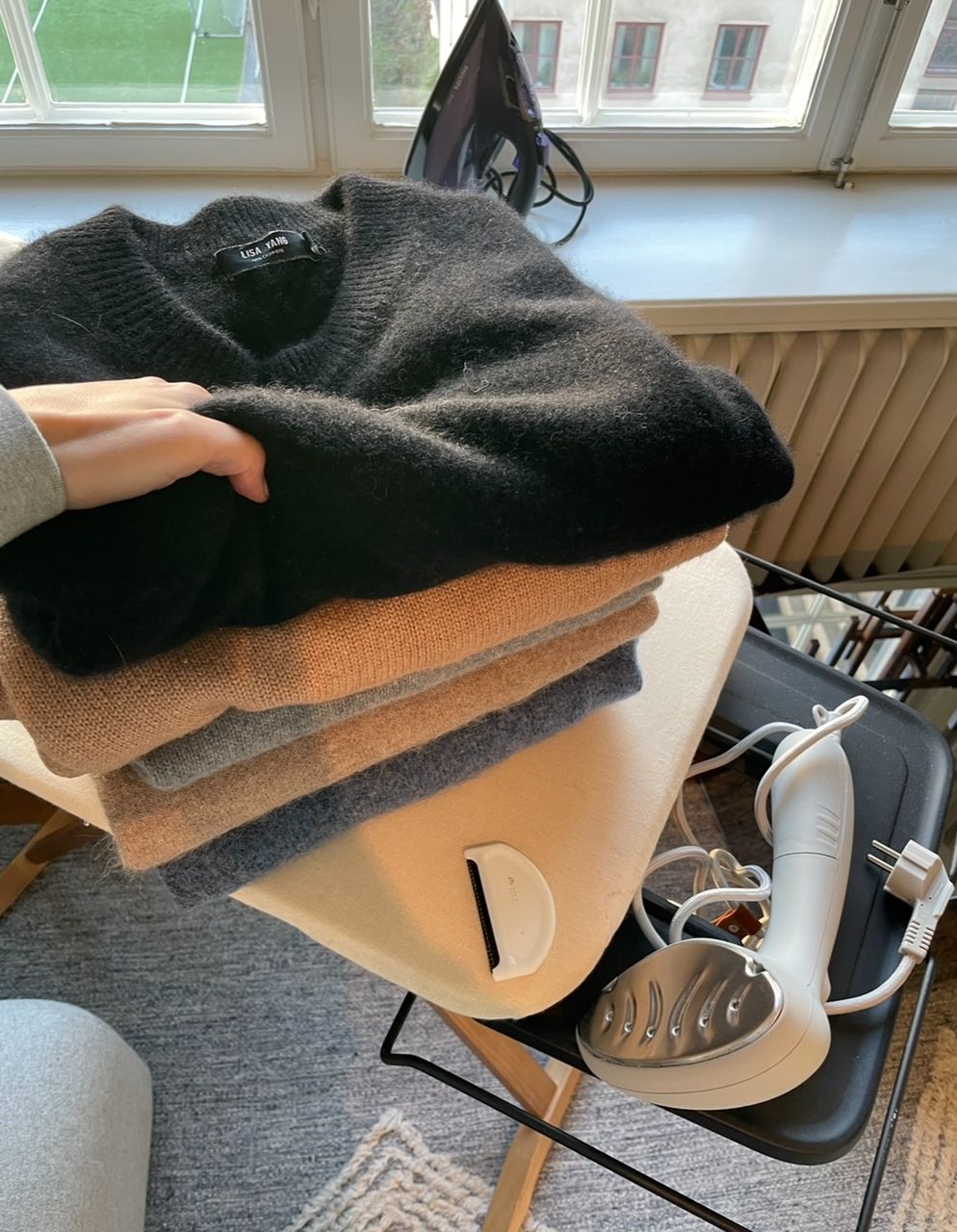
Images courtesy of Nicole Josephson
"It's crucial to avoid excessive washing and focus on stain removal when needed," she emphasises. This includes simple yet effective strategies like turning clothes inside out, using laundry bags for delicate fabrics, and employing various methods from airing and steaming to careful ironing. But beyond these, the emphasis lies on repairing damages rather than instantly replacing the garment. "Maybe you can tailor clothes that don't fit well, or re-make them completely?" she suggests, highlighting the value of a skilled tailor in her own sustainable fashion journey.
Josephson's approach to clothing consumption has shifted from quantity to quality, advocating for a mindful consideration of each purchase. "Even a cheaper garment can last for years if taken care of," she notes. This shift involves breaking away from trends and impulsive buys, choosing timeless pieces that align with personal style and offer versatility across occasions. Accessories, particularly quality jewellery, are seen as a way to elevate and complement basic attire, providing a sense of empowerment akin to donning armour each morning.
Advocating for sustainable fashion involves leading by example and inspiring change through positive actions and discussions. "Inspire through action and pleasant discussion rather than moralizing and propagating," Josephson advocates. However, she also acknowledges occasional frustration, especially in a society focused on immediate gratification and quick solutions. Yet, the approach remains rooted in education and understanding rather than reprimand or coercion.

For those looking to adopt more sustainable fashion habits, her advice is to start gradually, researching material choices and seeking out ethical brands. "Be aware of your choices; they can create meaningful change over time," Josephson encourages. From borrowing clothes for specific occasions to identifying key, versatile garments, the emphasis is on mindful consumption and expanding the utility of each piece.
Small steps pave the way for a more sustainable fashion industry, she asserts. "Start counting money," Josephson suggests, highlighting the financial benefits of longevity. From opting for second-hand items to sharing and exchanging with friends, it's about reshaping behaviours and attitudes toward consumption. The ultimate step? "Buy nothing today," she challenges, underscoring the immediate impact of conscious decisions on a larger scale.
In a world driven by fast fashion, Josephson's journey stands as a testament to the transformative power of thoughtful care and deliberate choices, urging us all to reimagine our relationship with clothing and consumption.


